Study of $Z$ bosons produced in association with charm in the forward region
[to restricted-access page]Information
LHCb-PAPER-2021-029
CERN-EP-2021-176
arXiv:2109.08084 [PDF]
(Submitted on 16 Sep 2021)
Phys. Rev. Lett. 128 (2022) 082001
Inspire 1922693
Tools
Abstract
Events containing a $Z$ boson and a charm jet are studied for the first time in the forward region of proton-proton collisions. The data sample used corresponds to an integrated luminosity of $6 {\rm fb}^{-1}$ collected at a center-of-mass energy of 13 TeV with the LHCb detector. In events with a $Z$ boson and a jet, the fraction of charm jets is determined in intervals of $Z$-boson rapidity in the range $2.0 < y(Z) < 4.5$. A sizable enhancement is observed in the forward-most $y(Z)$ interval, which could be indicative of a valence-like intrinsic-charm component in the proton wave function.
Figures and captions
|
Leading-order Feynman diagrams for $gc \rightarrow Zc$ production. |
Fig1a.pdf [9 KiB] HiDef png [51 KiB] Thumbnail [22 KiB] *.C file |

|
|
Fig1b.pdf [8 KiB] HiDef png [41 KiB] Thumbnail [20 KiB] *.C file |

|
|
|
NLO SM predictions [29] for $\mathcal{R}^c{\raisebox{-0.2em}{\scriptstyle j}}$ without IC [42], allowing for potential IC [39], and with the valence-like IC predicted by BHPS with a mean momentum fraction of 1% [38]. The fiducial region from Ref. [41] is used for $ y( Z ) < 2$; otherwise the fiducial region of this analysis is employed. The broadening of the error band that arises in the forward region, when allowing for IC, is due to the lack of sensitivity to valence-like IC from previous experiments. More details on these calculations are provided in the Supplemental Material [43]. The error bands shown for the first two predictions display the 68% confidence-level regions. Only the central value is shown for BHPS due to the charm PDF being fixed. |
Fig2.pdf [92 KiB] HiDef png [331 KiB] Thumbnail [392 KiB] *.C file |
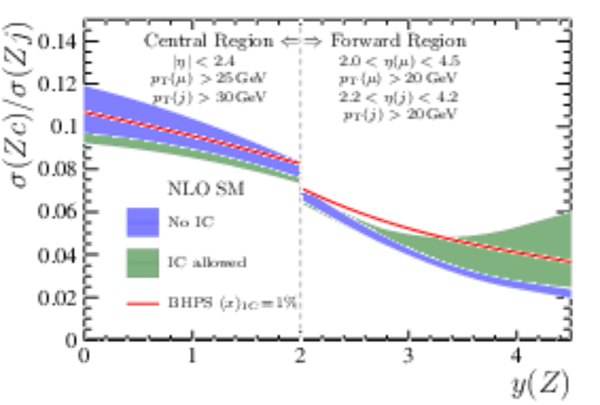
|
|
Distributions of (left) $m_{\rm cor}({\rm DV})$ and (right) $N_{\rm trk}({\rm DV})$ for all DV-tagged candidates in the $ Z j$ data sample reconstructed in the fiducial region with the projections of the fit results superimposed. |
Fig3a.pdf [106 KiB] HiDef png [241 KiB] Thumbnail [300 KiB] *.C file |

|
|
Fig3b.pdf [60 KiB] HiDef png [98 KiB] Thumbnail [130 KiB] *.C file |
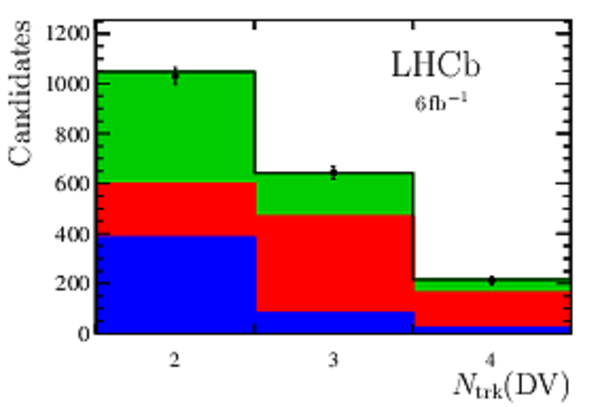
|
|
|
The detector-response matrix for $c$-tagged jets. The shading represents the interval-to-interval migration probabilities ranging from (white) 0 to (black) 1. Numerical labels are only shown for values greater than 1%. Jets with true (reconstructed) $ p_{\mathrm{T}} (j)$ in the 20--100 $\text{ Ge V}$ region but for which the reconstructed (true) $ p_{\mathrm{T}} (j)$ is either below 15 $\text{ Ge V}$ or above 100 $\text{ Ge V}$ are included in the unfolding but not shown graphically. |
Fig4.pdf [50 KiB] HiDef png [191 KiB] Thumbnail [143 KiB] *.C file |
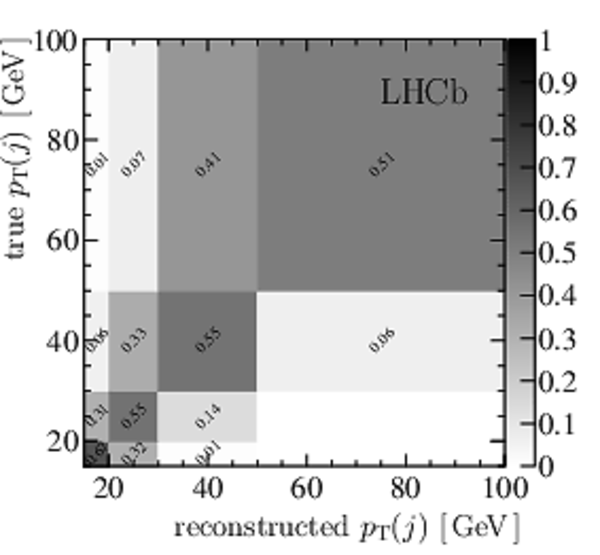
|
|
Measured $\mathcal{R}^c{\raisebox{-0.2em}{\scriptstyle j}}$ distribution (gray bands) for three intervals of forward $ Z $ rapidity, compared to NLO SM predictions [29] without IC [42], with the charm PDF shape allowed to vary (hence, permitting IC) [39,78], and with IC as predicted by BHPS with a mean momentum fraction of 1% [38]. The predictions are offset in each interval to improve visibility. |
Fig5.pdf [118 KiB] HiDef png [208 KiB] Thumbnail [290 KiB] *.C file |

|
|
Dimuon invariant mass distribution for the $ Z j$ sample. |
FigS1.pdf [75 KiB] HiDef png [119 KiB] Thumbnail [89 KiB] *.C file |
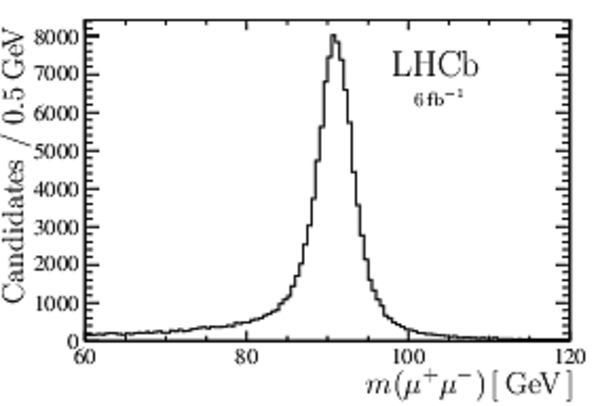
|
|
Probability density functions for the DV features used in the $c$-tagging fits for $c$, $b$, and light-parton jets: (left) the corrected mass and (right) the track multiplicity. |
FigS2a.pdf [57 KiB] HiDef png [264 KiB] Thumbnail [268 KiB] *.C file |

|
|
FigS2b.pdf [46 KiB] HiDef png [131 KiB] Thumbnail [165 KiB] *.C file |
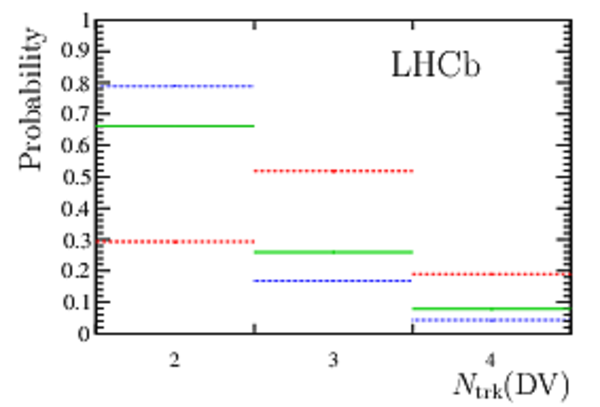
|
|
|
The detector-response matrix for inclusive $ Z j$ events. The shading represents the interval-to-interval migration probabilities ranging from (white) 0 to (black) 1. Numerical labels are only shown for values greater than 1%. Jets with true (reconstructed) $ p_{\mathrm{T}} (j)$ in the 20--100 $\text{ Ge V}$ region but for which the reconstructed (true) $ p_{\mathrm{T}} (j)$ is either below 15 $\text{ Ge V}$ or above 100 $\text{ Ge V}$ are included in the unfolding but not shown graphically. |
FigS3.pdf [50 KiB] HiDef png [192 KiB] Thumbnail [143 KiB] *.C file |
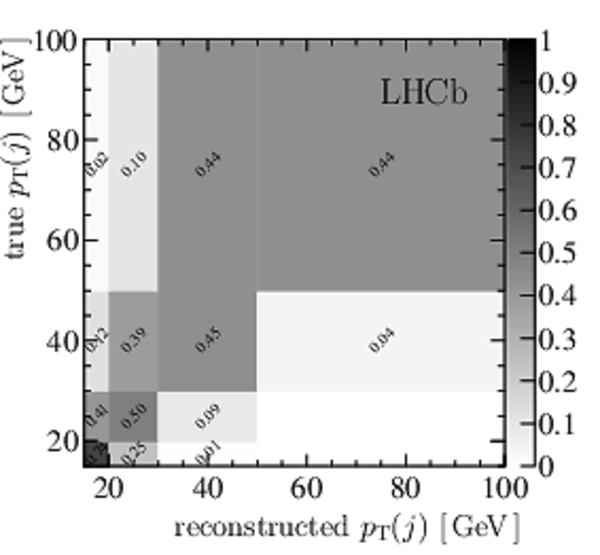
|
|
Momentum fraction distributions of the (left) $c$ quark and (right) gluon for the process $g c \rightarrow Z c$ in the predominant scenario where the $c$ quark is the leading (higher-$x$) parton. Distributions are shown separately for the three $y(Z)$ intervals used in the analysis, with each distribution normalized to have an integral of unity. These distributions are obtained using the theory calculations described in detail here in the Supplemental Material. |
FigS4a.pdf [54 KiB] HiDef png [196 KiB] Thumbnail [274 KiB] *.C file |

|
|
FigS4b.pdf [62 KiB] HiDef png [208 KiB] Thumbnail [284 KiB] *.C file |
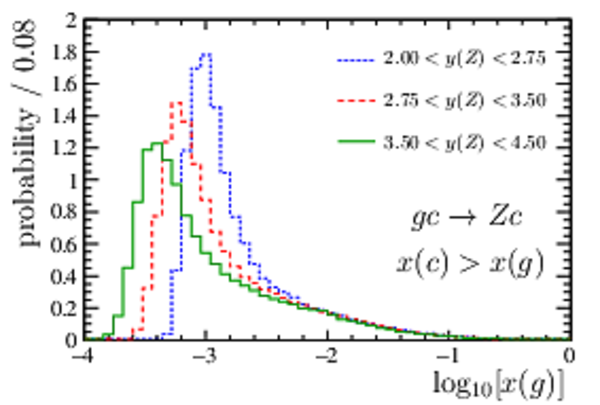
|
|
|
Measured $\mathcal{R}^c{\raisebox{-0.2em}{\scriptstyle j}}$ distribution (gray bands) for three intervals of forward $ Z $ rapidity, compared to NLO SM predictions [29] using various PDF sets. The predictions are offset in each interval to improve visibility. The left plot shows that the three PDF sets [78,79,81] on which the PDF4LHC15 [42] set is formed from all provide consistent predictions for $\mathcal{R}^c{\raisebox{-0.2em}{\scriptstyle j}}$ . The right plot shows that the ABM16 [82], JR14 [83], and HERAPDF 2.0 [84] PDF sets also provide qualitatively similar predictions, though the JR14 and HERAPDF 2.0 predictions are shifted to lower $\mathcal{R}^c{\raisebox{-0.2em}{\scriptstyle j}}$ values. |
FigS5a.pdf [94 KiB] HiDef png [207 KiB] Thumbnail [291 KiB] *.C file |
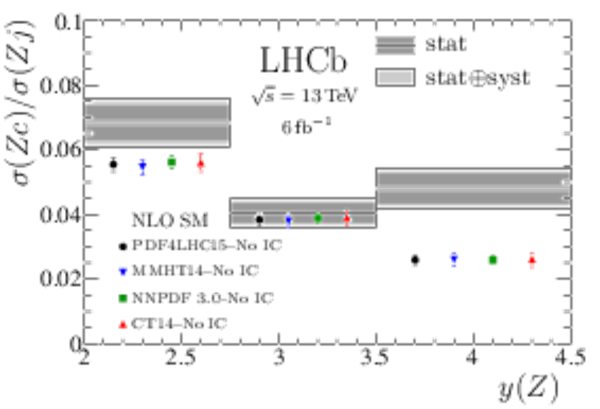
|
|
FigS5b.pdf [95 KiB] HiDef png [204 KiB] Thumbnail [288 KiB] *.C file |
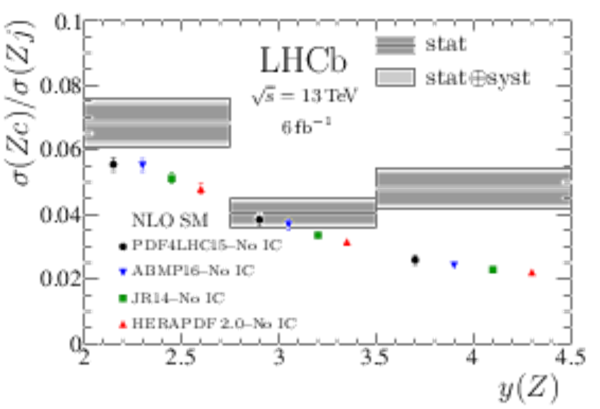
|
|
|
Animated gif made out of all figures. |
PAPER-2021-029.gif Thumbnail |

|
Tables and captions
|
Definition of the fiducial region. |
Table_1.pdf [53 KiB] HiDef png [40 KiB] Thumbnail [18 KiB] tex code |

|
|
Relative systematic uncertainties on $\mathcal{R}^c{\raisebox{-0.2em}{\scriptstyle j}}$ , where ranges indicate that the value depends on the $ y( Z )$ intervals. |
Table_2.pdf [45 KiB] HiDef png [53 KiB] Thumbnail [23 KiB] tex code |

|
|
Numerical results for the $\mathcal{R}^c{\raisebox{-0.2em}{\scriptstyle j}}$ measurements, where the first uncertainty is statistical and the second is systematic. |
Table_3.pdf [49 KiB] HiDef png [105 KiB] Thumbnail [45 KiB] tex code |

|
|
Numerical results for the ratios $r^c_{j}(i/k) \equiv \mathcal{R}^c{\raisebox{-0.2em}{\scriptstyle j}} [ y( Z ) _i] / \mathcal{R}^c{\raisebox{-0.2em}{\scriptstyle j}} [ y( Z ) _k]$, where the first uncertainty is statistical and the second is systematic for each result. The labels low, mid, and high refer to $ y( Z )$ ranges of 2.00--2.75, 2.75--3.50 and 3.50--4.50, respectively. |
Table_4.pdf [50 KiB] HiDef png [75 KiB] Thumbnail [33 KiB] tex code |

|
Supplementary Material [file]
| Supplementary material full pdf |
supple[..].pdf [102 KiB] |

|
|
xc.pdf [54 KiB] HiDef png [196 KiB] Thumbnail [274 KiB] *C file |
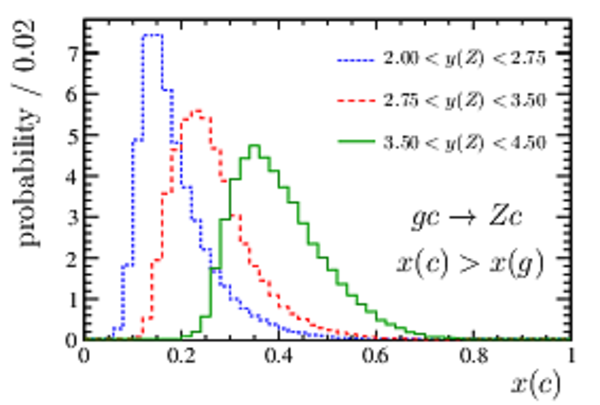
|
Created on 20 April 2024.
